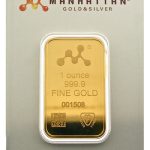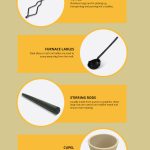For years, gold has been combined with glass to create functional works of art. It has taken the form of luxurious glassware, used by the upper class of Augustan Rome. Gold glaze has also been used on the windows of iconic buildings, such as the Sydney Opera House, due to its ability to block out the sun and keep audiences cool. The only thing more impressive than the product of combining gold and glass is the process by which it’s done.
How It’s Made
Different methods can be used to combine precious metals and glass. One of these is the glassmaking technique for gold glass, which seals gold foil between two layers of glass. The glass is inflated at the end of a blowpipe, forming a bubble. The bubble is then flattened to make a stable surface. After the glass cools, a scratch is made along the side. Heat is applied to the scratch until a crack is formed, separating the top and the base. The base is coated with adhesive and gold foil is applied. Using a sharp tool, a decorative pattern is etched into the gold.
Glass & Other Precious Metals
Gold isn’t the only precious metal that’s been paired with glass. Silver and glass are another common combination. In fact, there’s one household item that was historically made from both materials. It’s typically found in a bedroom or bathroom. Can you guess it? A mirror.
In 1835, German chemist Justus von Liebig invented “silvering” – the process of making mirrors by coating glass with silver. Silver-ammonia compounds are reduced chemically to metallic silver, which is deposited on a glass surface.
The silvering technique is still used today. However, it doesn’t always include actual silver. Aluminum is often silvered onto the outside of household mirrors instead, as it provides a more precise reflection and can withstand the elements more effectively than silver.











